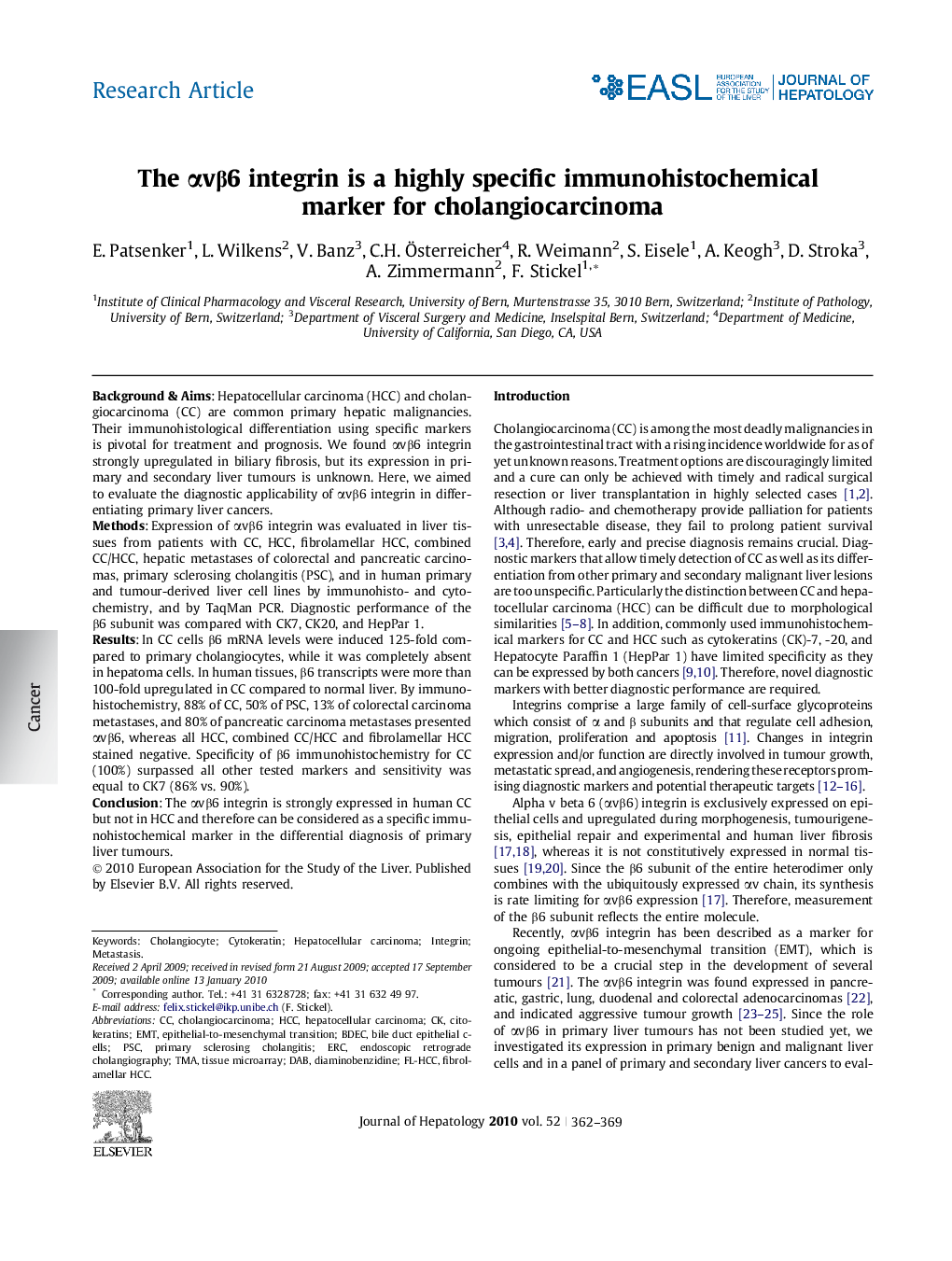| Article ID | Journal | Published Year | Pages | File Type |
|---|---|---|---|---|
| 6109545 | Journal of Hepatology | 2010 | 8 Pages |
Background & AimsHepatocellular carcinoma (HCC) and cholangiocarcinoma (CC) are common primary hepatic malignancies. Their immunohistological differentiation using specific markers is pivotal for treatment and prognosis. We found αvβ6 integrin strongly upregulated in biliary fibrosis, but its expression in primary and secondary liver tumours is unknown. Here, we aimed to evaluate the diagnostic applicability of αvβ6 integrin in differentiating primary liver cancers.MethodsExpression of αvβ6 integrin was evaluated in liver tissues from patients with CC, HCC, fibrolamellar HCC, combined CC/HCC, hepatic metastases of colorectal and pancreatic carcinomas, primary sclerosing cholangitis (PSC), and in human primary and tumour-derived liver cell lines by immunohisto- and cytochemistry, and by TaqMan PCR. Diagnostic performance of the β6 subunit was compared with CK7, CK20, and HepPar 1.ResultsIn CC cells β6 mRNA levels were induced 125-fold compared to primary cholangiocytes, while it was completely absent in hepatoma cells. In human tissues, β6 transcripts were more than 100-fold upregulated in CC compared to normal liver. By immunohistochemistry, 88% of CC, 50% of PSC, 13% of colorectal carcinoma metastases, and 80% of pancreatic carcinoma metastases presented αvβ6, whereas all HCC, combined CC/HCC and fibrolamellar HCC stained negative. Specificity of β6 immunohistochemistry for CC (100%) surpassed all other tested markers and sensitivity was equal to CK7 (86% vs. 90%).ConclusionThe αvβ6 integrin is strongly expressed in human CC but not in HCC and therefore can be considered as a specific immunohistochemical marker in the differential diagnosis of primary liver tumours.
